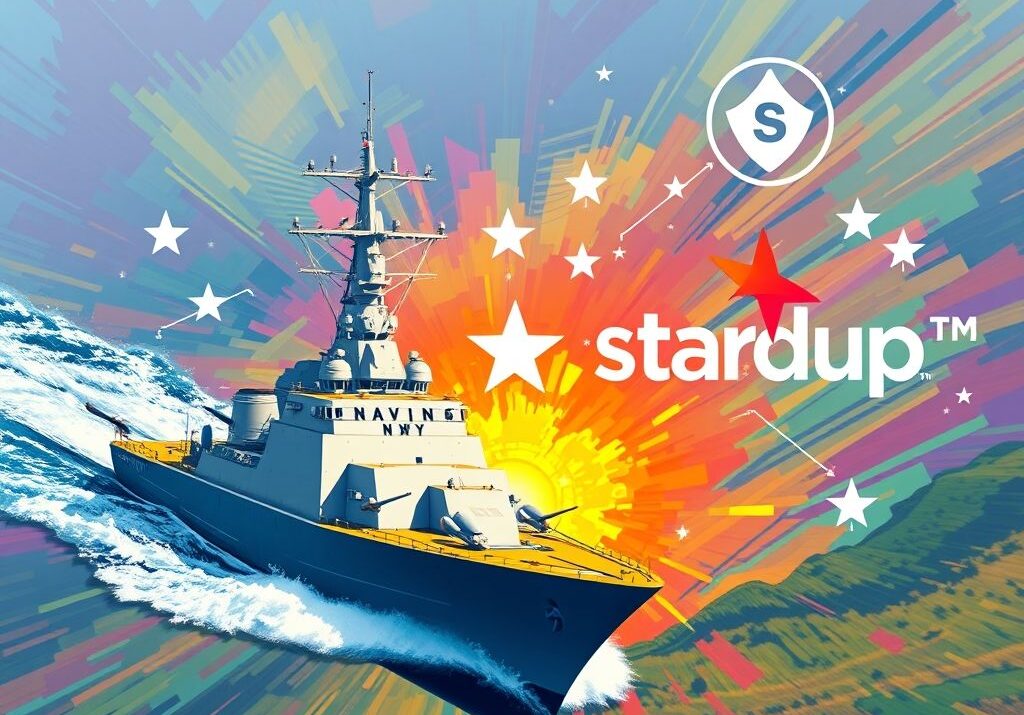Ever picture Silicon Valley moguls swapping their expensive suits for camouflage? It’s not just a quirky headline anymore. While some tech leaders are dipping their toes into military service, the U.S. Navy is making a much bigger move: aggressively courting startups.
I stumbled upon a fascinating article on TechCrunch the other day that highlighted this shift. The Navy’s Chief Technology Officer, Justin Fanelli, has apparently been on a two-and-a-half-year mission to open the Navy’s doors to the startup world. It seems they’re realizing that future naval dominance isn’t just about battleships; it’s about cutting-edge technology, and startups are brimming with it.
Why this sudden change of heart? Well, the traditional defense contracting process can be slow and, frankly, a bit clunky. Startups, on the other hand, are agile, innovative, and often hyper-focused on solving specific problems. According to a report by the Defense Innovation Unit (DIU), startups bring disruptive innovation to the defense sector at a faster pace than traditional contractors. Defense Innovation Unit
Think about it: the Navy needs solutions for everything from cybersecurity to advanced sensors and AI-powered analytics. Startups are often already working on these technologies for the commercial sector, and adapting them for military use can be a much quicker and more efficient path than developing everything in-house.
The article suggests the Navy is actively simplifying its procurement processes and creating more accessible points of entry for startups. This includes initiatives like pitch days, streamlined contracting vehicles, and even dedicated Navy personnel focused on scouting and engaging with promising startups.
This is not just about getting cool gadgets; it’s about maintaining a strategic advantage. As Admiral Michael Gilday, former Chief of Naval Operations, stated, “We need to be faster at adopting new technologies to maintain our edge against increasingly sophisticated adversaries.” U.S. Naval Institute
The shift in strategy is understandable. The United States military expenditure is estimated to hit $886 billion in 2023, making it the largest military expenditure in the world Statista. With such a huge amount being spent on military power, adopting the most efficient ways to stay ahead is only sensible.
Here are a few things that stood out to me from all this:
Key Takeaways:
- Agility Wins: The Navy recognizes the limitations of traditional procurement and is actively seeking the agility and innovation of startups.
- Tech is the New Weapon: The focus is shifting from pure military might to technological superiority, making startups valuable partners.
- Simplified Access is Key: The Navy is working to lower the barriers to entry for startups, making it easier for them to contribute.
- Strategic Advantage: This isn’t just about shiny new toys; it’s about maintaining a competitive edge in a rapidly changing world.
- Opportunity Knocks: This presents a huge opportunity for startups with relevant technologies to tap into a massive market.
So, what does this mean for your average startup based here in Cameroon? While directly contracting with the U.S. Navy might seem far-fetched, this trend highlights a broader shift in how governments and large organizations are approaching innovation. It emphasizes the importance of building agile, adaptable solutions and being ready to seize opportunities, wherever they may arise. It is a clear indicator that innovation can come from anywhere.
FAQ: Startups and the U.S. Navy
-
Why is the U.S. Navy interested in working with startups?
The Navy wants to leverage the agility, innovation, and specialized expertise that startups offer to rapidly adopt new technologies and maintain a competitive advantage. -
What kind of technologies is the Navy looking for?
The Navy needs solutions in areas like cybersecurity, artificial intelligence, advanced sensors, data analytics, and more. Anything that can enhance naval operations and security is potentially of interest. -
Is it difficult for startups to work with the U.S. Navy?
Historically, yes. But the Navy is actively working to simplify its procurement processes and create more accessible entry points for startups. -
What are some of the ways the Navy is engaging with startups?
The Navy is using pitch days, streamlined contracting vehicles, and dedicated personnel to scout and engage with promising startups. -
What are the benefits for startups that work with the Navy?
Startups can gain access to significant funding, valuable experience, and a large, stable customer. It can also provide validation for their technology. -
Are there specific programs or initiatives that startups should be aware of?
Keep an eye out for programs run by the Defense Innovation Unit (DIU) and other government agencies that focus on connecting startups with the Department of Defense. -
What if a startup doesn’t have direct military applications?
Many technologies developed for the commercial sector can be adapted for military use. Don’t assume your technology isn’t relevant. -
How can a startup get started in working with the Navy?
Start by researching the Navy’s technology needs and identifying potential areas of alignment. Attend industry events, network with government officials, and explore opportunities to participate in pilot programs. -
Is there a risk of intellectual property theft when working with the Navy?
The Navy has policies in place to protect intellectual property rights. It’s important for startups to understand these policies and take steps to protect their own IP. -
What are some common challenges for startups working with the government?
Common challenges include navigating complex regulations, dealing with bureaucratic processes, and adapting to the government’s unique culture and requirements.








